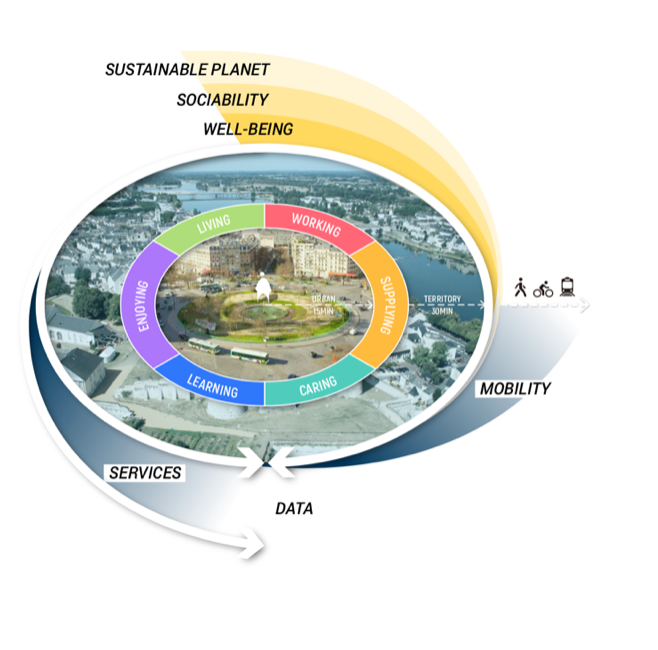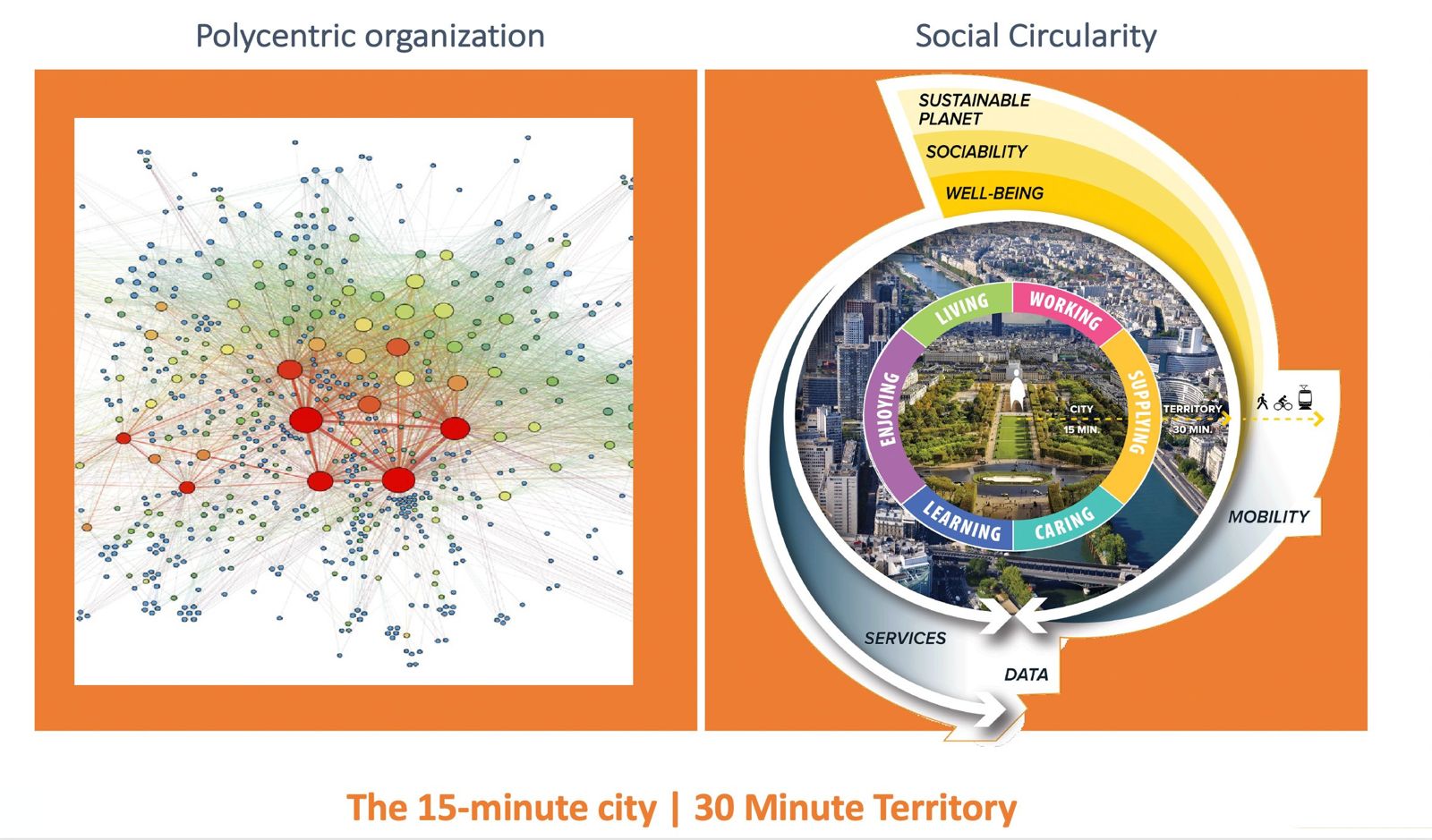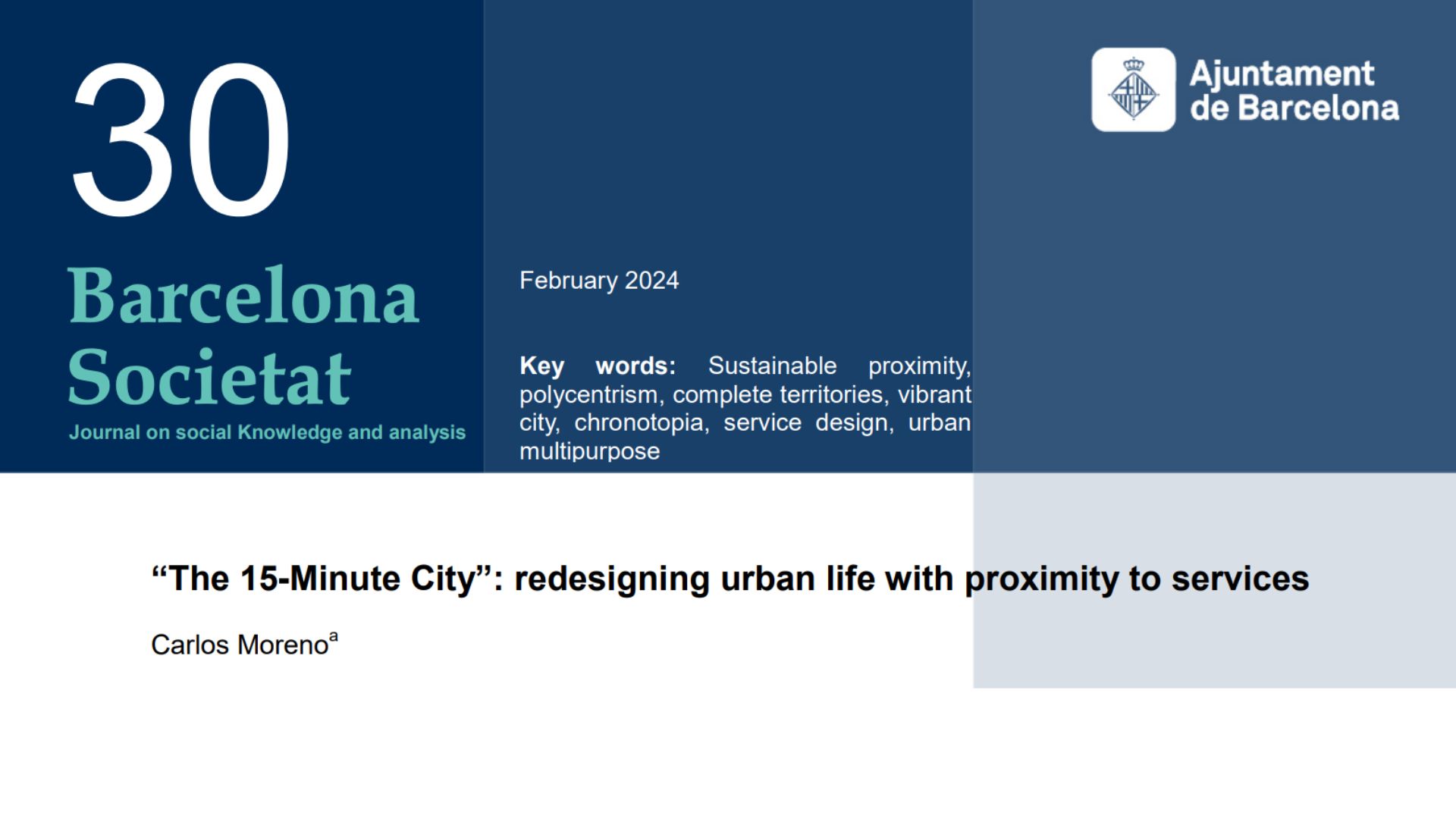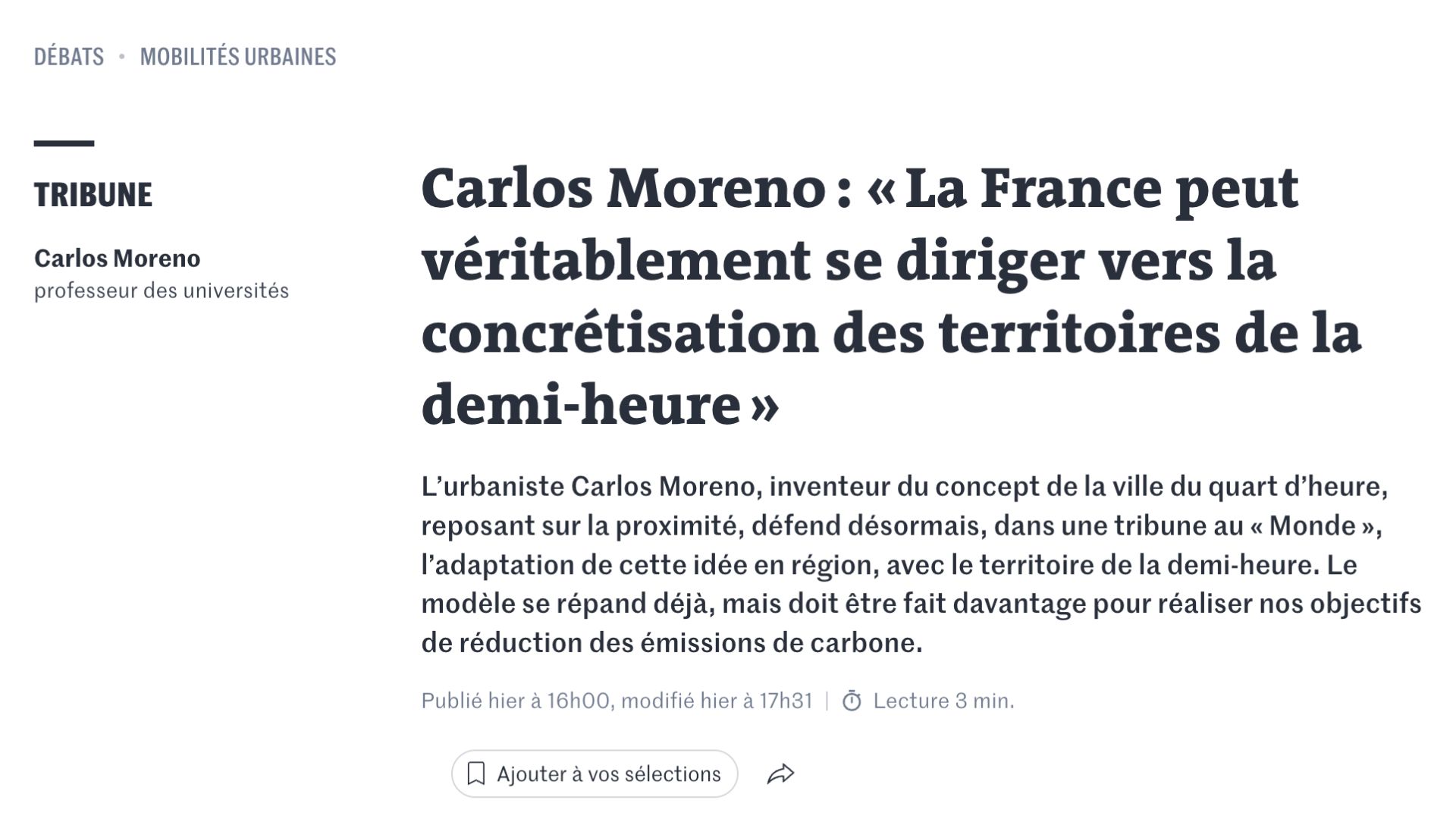
Our world cities, everywhere on the planet, concentrate time and again the core of human activity, but they are still driven by the paradigm of the oil era and its impact on roads and general urban planning. The era of omnipresent cars, associated with a lifestyle based on the ownership of a vehicle as an element of social status, is still present, but is faltering. At a time of the highly visible effects of climate impact in our urban lives, there is fortunately a growing awareness that it has become impossible to breathe in our cities due to the triple effect of emissions produced by buildings, heating and cooling networks, and pervasive petrol powered transport.
Thus, how can we reconcile the irreversible development of an urban world with crucial needs for real quality of life?
The energy transition, with the paradigm shift towards carbon-free and renewable sources, is certainly a priority, but it will be quite derisory if it does not go hand in hand with an ambitious urban policy focused on convergence with a radical transformation of our lifestyles. At a time when transport has become the biggest CO2 emitter, it is necessary to reconcile sustainable city requirements in terms of energy, but much more than that, it is about challenging our urban pace of life.
Indeed, new chrono-urbanism must be at the heart of our roadmap for the years to come. And so, we must be creative and imagine, propose and build another pace of life, other ways of occupying urban space to transform its use, in order to access essential urban social functions. Undeniably, preserving our quality of life requires us to build other relationships between these two essential components of urban life: time and space.
Living differently means above all changing our relationship with time, essentially time relating to mobility, which has greatly degraded the quality of life due to commuting which is costly in every respect. How can we offer urban dwellers a peaceful city while satisfying its indispensable urban social functions? It is time to move from city planning to urban life planning. This means transforming the urban space, which is still highly mono-functional, with central city and its various specialised areas, into polycentric city, based on four major components: proximity, diversity, density and ubiquity, in order to offer this quality of life within short distances, across the six essential urban social functions: living, working, supplying, caring, learning and enjoying. 
This is the ¼h city, contained in a compact area, (or the ½h territory in a semi- or low-density area), with hyper proximity, with “accessibility” for everyone at all times… This is the city where, in less than 15 minutes, dwellers can access their essential living needs. This is a challenge that concerns all urban stakeholders and requires everyone to reconsider their own role within urban life in order to open up to alternative horizons, conveying high quality societal life.
It is therefore a question of bringing the demand of the inhabitants closer to the offer that is proposed to them, of ensuring functional diversity by developing social, economic and cultural interactions, of ensuring substantial densification, while increasing spaces for public meetings and mixing, of optimising the range of services via digital technology and collaborative and sharing models, of turning the streets into spaces of carbon-free mobility by walking or cycling, of reinventing new hyper-proximities, of rediscovering biodiversity where we live by encouraging short circuits.
Thus, let’s ensure that digital technology becomes a factor of social cohesion and inclusion and not a factor of exclusion or pertaining to the generation of « zombie-geeks », those who are massively connected and socially disconnected, with the corollary of bubbles and fakes, taken as « a priori truths ».
It also means linking our hyper-proximities to live in our cities with a new generation of public services, multimodal and shared services. We are also confronted to the challenge of re-inventing urban commons.
More than ever this hyper-proximity will be a source of new economic and social models in our cities; and they are in fact already emerging. Returning to local urban life means switching mobility as we have experienced to the mobility we have chosen. This is another way of living in the city, allowing social bonding which exists in proximity to be part of this high quality of life. This means giving back the city its most valuable attribute, i.e. being a living universe, to restore its metabolism, like any living organism, to make the city alive and available to all.
Within this approach, plants and biodiversity, as parts of the living world, are indeed essential. They capture carbon and also contribute to the metabolism of the whole urban life. But plants are also a factor of attractiveness and quality enhancing human relationships in the city. In addition to fixing carbon, plants also “fix” human beings. All studies show that compact cities, even very dense ones, which have been able to integrate plants into daily life, are cities in which their inhabitants have reduced the so-called » journeys to escape « , “in search of greenery ». Therefore, this has also a direct effect on mobility, and is in line with improvements brought by chrono-urbanism, the ¼h city, allowing people to benefit from high quality societal life, by commuting no more than a quarter of an hour away from home.
Vegetation and hydrology go hand in hand. Managing water resources is one of the concerns that must be at the heart of urban life today. Changing attitudes towards water cycle in cities is one of the major needs to be addressed in the next decade. With the ¼h city, local networking and re-inventing chrono-urbanism make perfect senses and become of strategic importance when the convergence of vegetation, nature and water is projected into the urban transition towards this high quality societal life.
Certainly, with climate change, heatwaves, water stress which becomes increasingly visible, air pollution and its serious consequences on urban health, the place of urban living space, useful time, and the role of digital technology, are new crucial battles for the years to come.
This is a new way to explore this universe of life transformation formed by urban commons of social functions and it is essential to territorialise them in multiple centralities, each separated by short distances: areas where to live, work, shop, get healthcare, educate, blossom. Indeed, being aware that the fight for our urban commons is widening is at the heart of our future choices: along with water, air, shade, space, time and silence. Those will be at the heart of new urban battles.
Thus, let us fight so that they are available for all!
Paris, June 30, 2019
Carlos Moreno
Professor, Scientific Director of ETI Chair at Paris1 Panthéon Sorbonne University
Medal of the Prospective 2019 of the French Academy of Architecture


